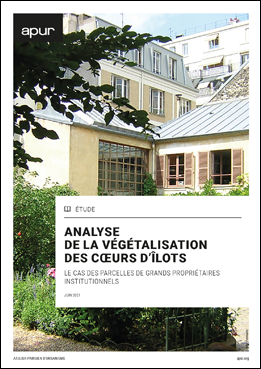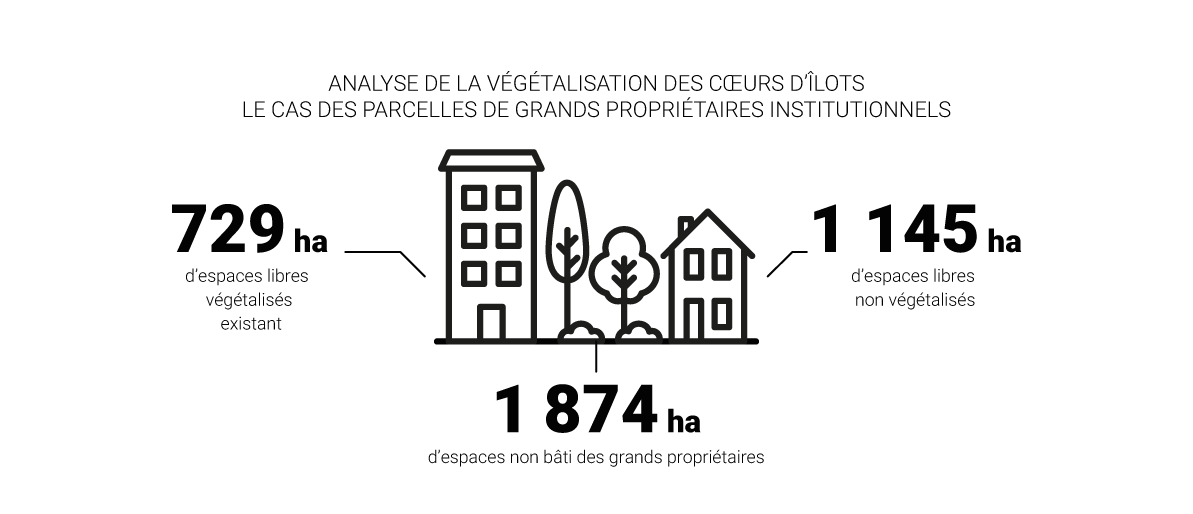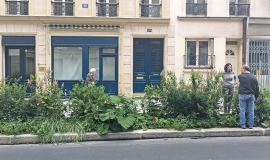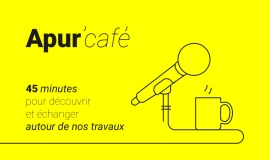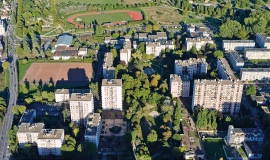Vegetation within the boundaries of street blocks and in public space is a major issue in the city, in order to respond to cooling needs, biodiversity issues and city dwellers’ desire for nature. In order to understand better the place of nature within street blocks in Paris, Apur sheds new light on the inner areas of land plots of institutional landholdings, indicating their greening, their regulatory protection and the proportion of space sometimes still largely free and not greened.
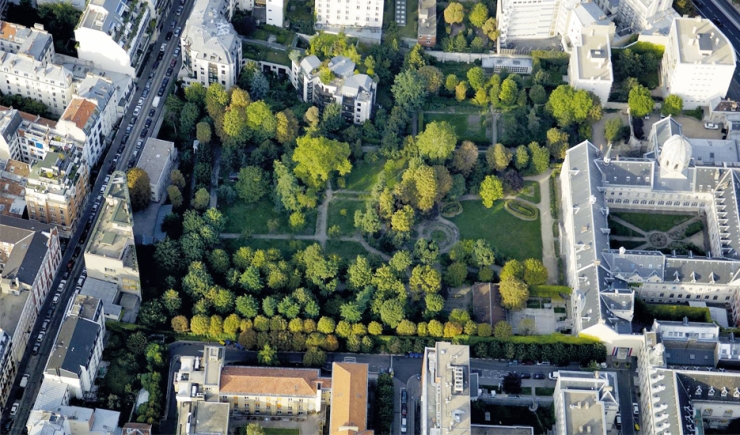
31% of Paris’ surface area is covered by vegetation. This greening takes the form of 1,840 ha of woods, 700 ha of public parks and gardens and 650 km of planted verges of roads and pathways. Vegetation is also very present in land plots that have limited access. This includes nearly 200 ha of greened areas identified in sports, cultural, educational, religious (etc.) facilities and over 400 ha on private landholdings (housing, companies, offices).
This atlas documents the place of nature on the land parcels of large institutional landowners such as the City of Paris, social housing landlords, the State, APHP, SNCF, RATP and religious communities.
For each landowner, Apur has identified the total surface area of their land holding, the non-constructed surface area, the greened surface areas and areas already included in the Paris local urbanism plan - PLU - which are EVP (Protected Green Spaces) established to protect vegetation within street blocks, which may be open or not to the street, and ELV (Free Space to be greened), which was established mainly to protect gardens and open spaces leading onto the street.
What emerges is that numerous land parcels are already extensively greened. Certain could, for example, be more open to the public, or their vegetation could be enriched to strengthen their ecological role and improve the living environment of inhabitants, people using the space and those living nearby.
What also emerges in the negative, is that some of the most mineralised land plots could be greened more to reduce the effects of heat island, to reinforce ecological continuity, favour rainwater absorption and improve the quality of life, and still maintain the functions they accommodate today.
For example, land used by establishments that house infants and teaching facilities are, on average, non-constructed on 50% of their surface area, thus forming a total non-constructed area of 239.1 ha. Only 46% of this free space is today covered by vegetation, and only 9% (21.5 ha) are included in the PLU that protects green spaces, which is the only existing protection for vegetation within street blocks in urbanism documents. The Oasis recreation ground projects are one of the City of Paris’ ways of improving the quality of these spaces and their educational function by reinforcing the space given to vegetation.
Reinforcing greening is also supported by certain social landlord bodies when renovation projects are carried out.
In all, the land parcels of the large landholdings documented represent a total of 2,776 ha. They are on average non-constructed on 68% of their surface area, a total non-constructed land area of 1,874 ha. Only 39% of this free space is today covered by vegetation, and only 6% (117 ha) is included in the PLU protection of green spaces.
Documenting areas within landholdings is also included in the thought process underway on the future bioclimatic PLU.

